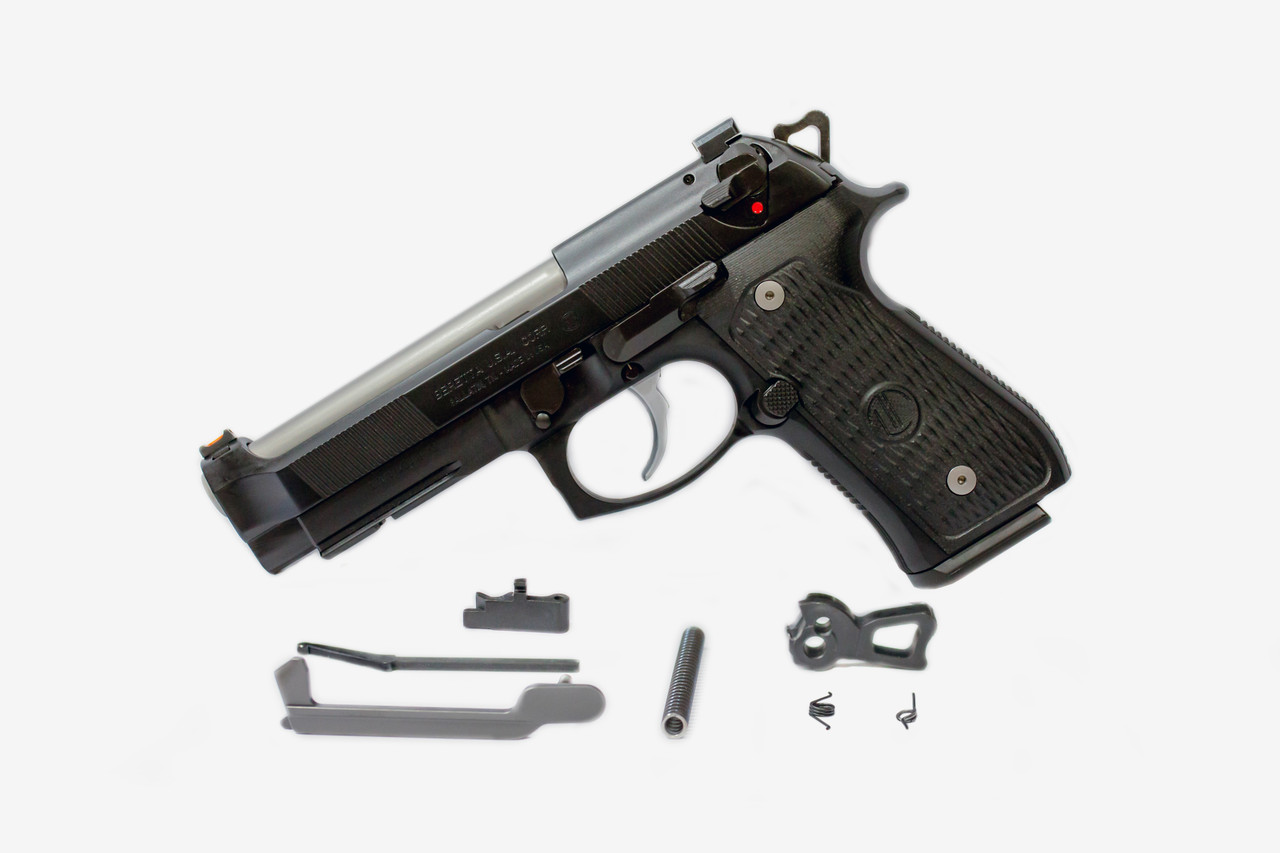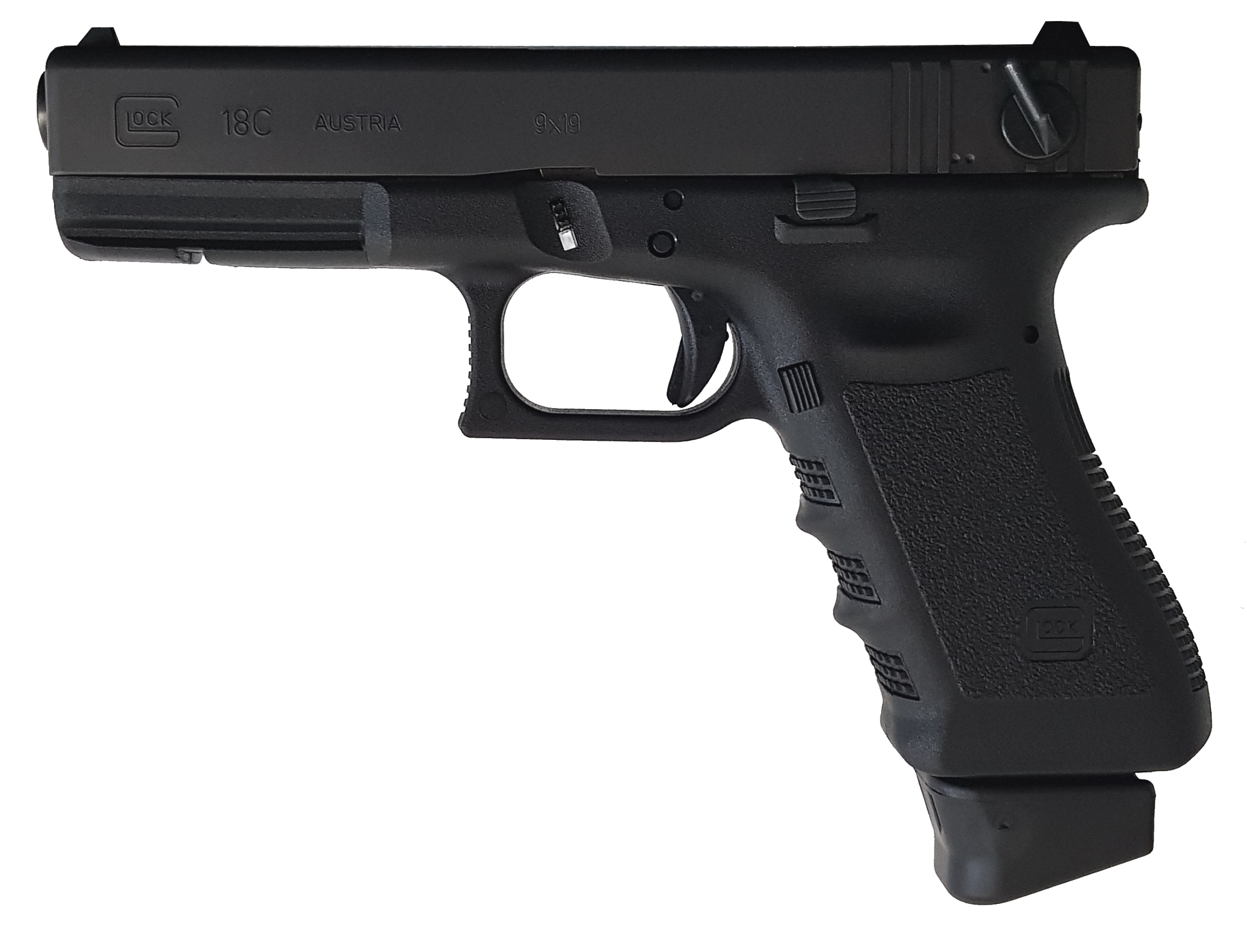M9 Handgun Specs - The Beretta M9, officially Pistol, Semi-Automatic, 9mm, M9, is the designation of the Beretta 92FS semi-automatic pistol used by the United States Armed Forces. The M9 was adopted by the US Army as a service pistol in 1985.
The 92FS won a race to replace the M1911A1 as the US Army's primary sidearm in the 1980s, beating many other competitors and only narrowly beating the SIG Sauer P226 on cost grounds.
M9 Handgun Specs

A few other pistols have been adopted to a lesser extent, namely the SIG P228 pistol, and other models remain in use in certain niches.
Beretta M9 Pistol
The M9 was to be replaced by a US Army program, the Future Handgun System (FHS), which was merged with the SOF Combat Pistol program to create the Joint Combat Pistol (JCP). The JCP was aligned with the Combat Pistol (CP) and the number of pistols to buy was drastically reduced. The US Army, Navy, Air Force and Marine Corps are replacing the M9 with the SIG Sauer M17 and M18.
During the 1970s, every branch of the US Armed Forces (except the US Air Force) carried the .45 ACP M1911 pistol. The US Air Force chose to use .38 Specialty revolvers, which were also carried by some criminal/military police organizations, US Air Force ICBM officer crews, and military crew members in all services serving in hostilities or used in nuclear weapons tariffs.
The Department of Defense decided to synchronize the weapons of all five branches of the US armed forces. Military personnel from the ground combat branches found this arrangement highly controversial. However, they admitted that the decision was made to avoid buying spare parts for worn-out M1911 frames and to create a common NATO pistol cartridge to simplify logistics (in the event of a war against the Soviet Union in Europe). In 1979, the Joint Small Arms Service Program began searching for a replacement for the tried and tested M1911, and the 9×19mm Parabellum cartridge was chosen due to compliance with the NATO Standardization Agreement (STANAG). In 1980, the design of the Beretta 92S-1 was selected from efforts by Colt, Smith & Wesson, Walther, Star M28 and various models from Fabrique Nationale and Heckler & Koch.
However, the result was contested by the US military and new tests were conducted by the military. In 1984, trials began again with updated trials from Smith & Wesson, Beretta, SIG Sauer, Heckler & Koch, Walther, Steyr and Fabrique Nationale. Beretta won that competition, but in 1988 there was a new attempt, the XM10 competition. This led to two different attempts that were more limited but resulted in the Beretta being chosen - albeit with an updated design.
Hfc Sp 118 M9 Heavy Weight Srping Pistol
Beginning in 1979, while the pistol selection processes were underway, the holster company Bianchi International began developing a multipurpose military holster in preparation for the release of a new pistol. The resulting holster was designed by John Bianchi and Richard Nicholas and designated the M12. The M12 has served the US Armed Forces well for decades and was introduced in 1985 at the same time as the introduction of the Beretta 92FS.
The Beretta 92FS performed well in a range of survival tests including: exposure to temperatures between -40 and 140°F (-40 to 60°C); salt water corrosion tests; repeated discharges on concrete; And buried in sand, mud and snow. In addition, the 92FS has a proven MRBF (Mean Shots Before Failure) of 35,000 rounds - a number often advertised as five or six times the life of the pistol. While this is normal
The Iraq War, which involved frequent urban and spatial combat, forced American soldiers to rely more on their pistols.

The M9 is a single/double-action, short-blowback, semi-automatic pistol that uses a 15-round checkerboard magazine with a reversible magazine release button that can be positioned for right- or left-handed use. The M9 is used with the Bianchi M12 holster, although other holsters are commonly used. Specific modifications made to the Beretta 92 include:
Beretta 92fs M9 Electric Pistol Aep
It also has a large hammer pin that fits into a groove on the underside of the slide. The main purpose is to prevent the breech from flying backwards off the frame if it breaks. This was added after slip failures were observed during testing on Beretta models with very high cartridge counts (failures later believed to be caused by faulty ammunition used in the tests).
The M9 features several internal safeties, including a firing pin lock that prevents the firing pin from moving without the trigger being pulled, and a firing pin that rotates when the safety lever is cocked, preventing the firing pin from firing, even if the gavel falls. The M9 also has an external ambidextrous safety lever that allows both left- and right-handed users to gauge or disengage the safety mechanism.
Among other things, a Picatinny rail was added with a slot for mounting lights, lasers and other weapon accessories. The M9A1 has a more aggressive fore-end, a checkered rear sling, and a slanted magazine for easier weapon reloading. The M9A1 pistols are sold with PVD (Physical Vapor Deposition) coated magazines designed to better withstand the conditions of the sandy environments of the Iraq and Afghanistan wars.
The M9 22LR is a variant of the M9 in .22 Long Rifle and shares the same service, controls and discharge as the M9. The M9 22 is available with 10 and 15 round magazines, interchangeable sights and interchangeable grips to match the Beretta M9.
Beretta 92fs Inox Italian 9mm Pistol
The M9 has been the standard-issue rifle in the United States Navy, United States Army, and United States Air Force since 1985, replacing the Colt M1911A1 in the Army and Navy and the Smith & Wesson .38 Special in the Air Force. The M9A1 also sees a limited problem for the United States Marine Corps.
A large number of M9 and M9A1 were ordered in 2006. At the 2009 SHOT show, Beretta announced that it had been awarded a $220 million contract to supply 450,000 M9s and M9A1s to the US military over five years.
The Beretta M9 General Officer's Model is a special model issued to Army and Air Force general officers

Which replaced the special edition RIA M15 General Officer's Pistol and Colt M1911A1 in early 1986. It is identical to the standard M9 sidearm with a standard Bruniton polymer finish and black composite grips, except that the prefix "GO" has been added to the serial number range beginning with GO-001. It comes with a metal belt buckle that comes in gold metal for army generals and silver metal for air force generals.
Beretta M9 Pistol, Semiautomatic, 9mm, M9 By Bagera3005 On Deviantart
The Marine Corps Times in July 2007 reported plans for all officers below colonel and all SNCOs to receive the M4 carbine instead of the M9.
The new assignment policy will continue to assign M9s to Marine Corps colonels and senior and senior naval officers first class and above.
The United States Coast Guard has replaced most of its M9 pistols with the SIG P229 DAK, although some M9s remain in service with certain units.
On September 30, 2011, Beretta USA announced that the US Army's Foreign Military Sales Program had purchased an additional 15,778 Model 92FS pistols for the Afghan military and other US allies.
Beretta 92: Ultimate Combat And Tactical Pistol
In September 2012, Beretta USA announced that the US Army had purchased 100,000 M9 pistols and that the M9 "will remain their sidearm for the next five years".
Prior to its widespread adoption by the US military, questions were raised in a 1987 General Accounting Office report following an incident in which a member of the Naval Special Warfare was injured by a malfunctioning chute on a Beretta 92SB.
And two other errors were later observed in additional tests. These errors affected both military and civilian Beretta models with very high cartridge counts, and after investigation, Beretta believed them to be the result of ammunition supplied by the US military exceeding NATO-recommended pressures. Conversely, the U.S. military concluded that the flaws were due to the low-strength metal contained in the Italian-made slides. However, this event led to a change in the M9's design to prevent a slide failure from injuring the user, after which no more slide breakages were reported.

In December 2006, the Center for Naval Analyzes released a report on US small arms in combat. CNA conducted interviews with 2,608 soldiers who had returned from Iraq and Afghanistan in the past 12 months. Only troops who had fired their guns at enemy targets were allowed to participate. 161 soldiers were armed with M9 pistols, accounting for 6% of the survey. 58% of M9 users (93 soldiers) reported being satisfied with the weapon, the lowest satisfaction rate in the survey. 48% of users (77 soldiers) are dissatisfied with the M9 ammunition. 64% (103 soldiers) were satisfied with handling characteristics such as size and weight. M9 users were the least satisfied with the weapon's performance, including: 76% (122 soldiers) for accuracy, 66% (106 soldiers) for range, and 88% (142 soldiers) for rate of fire. 48% of M9 users (77 soldiers) were
Practical Guide To The Operational Use Of The Beretta 92f/m9 Pistol By Erik Lawrence
Bmw m9 specs, deco m9 plus specs, m9 specs, specs htc one m9, specs of htc m9, htc m9 plus specs, htc m9 verizon specs, leica m9 specs, fiio m9 specs, tecra m9 specs, line 6 m9 specs, deco m9 specs
0 Comments